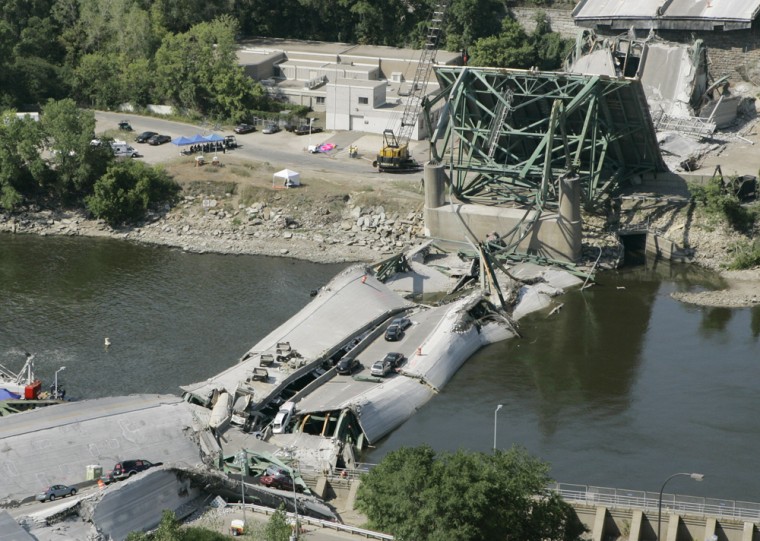The Federal Highway Administration could overhaul the terminology it uses to classify bridges’ safety in the wake of a deadly Minnesota bridge collapse in August, the agency’s chief said Monday.
The Associated Press reported last week that the country’s state highway officials have been asking for such a change because they think the current terms — including “structurally deficient” and “functionally obsolete” — scare the public and make bridges appear shakier than they really are.
As the terms used in ratings became more common in public discussion, people became confused, said Rick Capka, administrator of the Federal Highway Administration.
“When they define the term in their minds incorrectly, then that leads to confusion and maybe some anxieties that don’t need to be there,” Capka told the AP after speaking to a national convention of state transportation officials.
Capka gave no timetable for revising the terminology.
The Minneapolis interstate bridge had been classified as “structurally deficient,” as have more than 73,000 others nationwide. The term means a significant load-carrying element is in poor condition because of deterioration or damage.
It doesn’t mean the bridge is about to fall down, although it may sound dire to people unfamiliar with the ratings, Capka said.
Categories help determine funding
The terms date to 1978, when Congress updated guidelines for replacing and rehabilitating bridges. The categories help determine how federal money is given to states.
Capka said the people coining the terms wanted to give specific meaning to the terms. He likened “structurally deficient” to a bridge that was showing wear, or a shoe with a damaged heel but that is still wearable.
Other terms include “functionally obsolete” for bridges that don’t meet current design standards because of changing traffic demands. Capka likened these bridges to shoes that are out of style.
In New York, public confusion prompted the state’s Department of Transportation to put on its Web site a list of questions and answers on topics about bridge inspections, including the classification terms, and state and federal requirements, said Stanley Gee, executive deputy commissioner.
Confusion over terms
In Arizona, engineers worked with the transportation department’s public relations office to help them understand the terms and then take that message public, said Sam Elters, the state department of transportation’s chief engineer.
“We recognized quickly the questions asked of us,” he said, “’What do these terms mean? How many bridges do we have in Arizona that fit that description?”’
In Oklahoma, after some initial confusion, people now seem to understand the terms, and trust that the state will shut down bridges if need be, said John Fuller, deputy director and chief engineer of the Oklahoma Department of Transportation.
“They have a little bit more comfort and confidence that there aren’t immediate threats of collapse throughout the country,” he said.
The collapse of the Interstate 35W bridge in Minneapolis killed 13 people, injured about 100 and thrust the safety of the nation’s bridges into the spotlight. The investigation into what caused it will take six months to a year, Capka said.
“Bridges don’t collapse. That just doesn’t happen,” he said. “Something went wrong. I can’t say what it was, but we will make adjustments when that becomes clear.”
